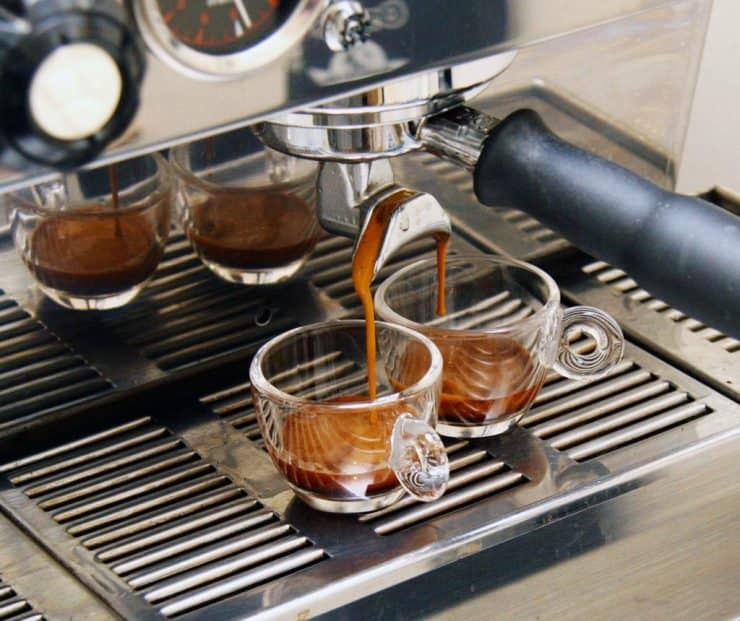Discovering the Art of Coffee Brewing: A Comprehensive Guide to Improving Your Mug
The art of coffee brewing is a complex discipline that merges scientific research with individual expression, where the option of beans, water high quality, and developing techniques assemble to create a refined sensory experience. Understanding the nuances of various coffee beans, specifically the differences between Arabica and Robusta, is vital for any connoisseur.
Understanding Coffee Beans
To genuinely value the art of coffee brewing, one must initially understand the foundational element: coffee beans. Coffee beans mostly drop into two categories: Arabica and Robusta.

In addition, the handling approach-- whether cleaned, natural, or honey-- impacts the beans' final taste. Understanding these aspects enables brewers to pick the right beans that line up with their chosen flavor profile, inevitably enhancing the coffee developing experience. coffee brewing methods. This understanding is vital for any person desiring understand the craft of brewing the best cup of coffee
Brewing Methods Clarified
Many enthusiasts find that the choice of developing approach dramatically impacts the final flavor and aroma of their coffee. Each approach takes advantage of various removal strategies, affecting the coffee's personality and splendor.
Drip developing, one of one of the most popular approaches, utilizes a maker to leak hot water with ground coffee, producing a tidy and constant mug. French press, on the other hand, submerses coffee grounds in hot water, permitting a fuller body and even more robust flavor, as oils and great bits stay in the mixture.
Pour-over brewing offers a thorough method, where water is manually poured over coffee premises, permitting specific control over removal time and temperature level, causing a nuanced and bright mug.
Espresso, a concentrated coffee brewed under stress, is known for its solid taste and luscious appearance, acting as the base for different coffee beverages, consisting of cappuccinos and lattes.
Important Devices Required
The structure of any type of successful coffee brewing process exists in top quality equipment customized to your preferred method. A dependable coffee mill is important; fresh ground beans dramatically enhance flavor and scent.
Following, consider your brewing tool. Options vary from drip coffee makers and pour-over configurations to try here French presses and espresso machines. Each approach uses distinctive taste accounts and developing strategies, so choose one that aligns with your taste choices.
A precise range is additionally important, allowing you to measure coffee and water precisely, which is crucial for uniformity. In addition, a thermostat can help keep an eye on water temperature, try these out as it directly affects removal high quality.
Learning Water Quality
The high quality of water utilized in developing coffee plays a significant duty in determining the final flavor account of the mug. Numerous elements add to water top quality, consisting of mineral web content, pH degree, and total pureness. Preferably, water must be without contaminants and contaminations, as these can detrimentally affect the taste of coffee.
Minerals, such as calcium and magnesium, boost the removal of flavors from the coffee premises, while keeping a balanced pH level-- around 6.5 to 7.5-- is crucial for optimum removal. Water that is as well soft might bring about under-extraction, leading to weak or sour tastes, while extremely difficult water can create a bitter or harsh cup.
For the ideal outcomes, filtered water is recommended, as it decreases the presence of chlorine and other unfavorable materials typically discovered in faucet water. In addition, consider making use of water with a Complete Dissolved Solids (TDS) level between 150-200 ppm, which is visit this site right here generally excellent for coffee brewing. By grasping water top quality, you can lay a strong foundation for attaining a consistently outstanding cup of coffee, allowing the special features of your selected beans to shine through.

Tips for Flavor Improvement
Enhancing the flavor of your coffee can substantially raise your brewing experience and bring out the distinct nuances of your chosen beans. To accomplish this, think about numerous vital elements that influence taste.
First of all, the work size plays a crucial role. A finer grind boosts extraction, resulting in bolder tastes, while a coarser work returns a milder cup. coffee brewing methods. Readjust your work according to your brewing method to achieve optimum results
Second of all, explore mixture time. Over-extraction can cause resentment, while under-extraction lead to a sour taste. Go for a brew time that balances these extremes, usually between 2 to 4 mins, depending upon your method.
Brewing with water that is too warm can blister the coffee, while water that is also cool may fall short to draw out sufficient flavor. In final thought, the art of coffee developing is a multifaceted practice that calls for a deep understanding of numerous components, including bean choice, developing approaches, and water top quality. By integrating these elements, coffee enthusiasts can boost their brewing strategies, resulting in a cup that not only satisfies individual preferences however likewise showcases the abundant intricacy of coffee tastes.
The art of coffee brewing is a complex technique that merges science with personal expression, where the option of beans, water quality, and brewing methods merge to produce a refined sensory experience.To absolutely appreciate the art of coffee brewing, one must initially understand the fundamental element: coffee beans. Brewing with water that is also hot can scorch the coffee, while water that is also amazing might fall short to extract appropriate flavor. In conclusion, the art of coffee brewing is a diverse technique that calls for a deep understanding of numerous elements, including bean option, brewing techniques, and water top quality. By incorporating these components, coffee fanatics can elevate their developing methods, resulting in a mug that not just satisfies individual preferences however likewise showcases the rich intricacy of coffee flavors.